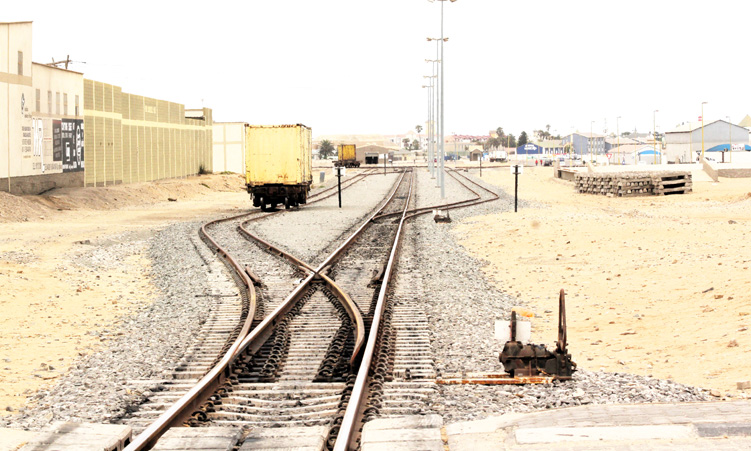The absence of a bypass around the railway line is a ticking time bomb, Swakopmund Residents’ Association (SRA) councillor Wilfried Groenewald says.
Groenewald is also on the Swakopmund Municipal Council’s management committee.
“If anything happens in town, we’ve got no means of doing anything about it. To fight that fire or disaster . . . you can forget it,” he warns, highlighting the significant risk posed by the transportation of hazardous materials like sulphuric acid fuel and ammonium nitrate explosives to mines through Swakopmund.
Groenewald has been advocating a bypass for years, but little urgency has been demonstrated by national railway utility TransNamib.
A serious train accident took place at Swakopmund about three years ago, in which an assistant train operator was killed.
Four locomotives and 25 fuel and container wagons were involved in the crash.
The train, which derailed at Swakopmund, was travelling towards Walvis Bay and came off the tracks after TransNamib locomotives derailed while approaching the shunting yard area of the station at the town.
Groenewald says despite a warning and ensuing tragic events, progress has been slow.
He says major developments are in the pipeline, which would require rail transport.

“Botswana has asked that they get a line from Gaborone to Walvis Bay because of congestion at the South African harbour. They’re not getting the goods transported in and out,” he says, noting that the Walvis Bay harbour is also growing in capacity.
Groenewald mentions the upcoming green hydrogen production facilities at Swakopmund and Walvis Bay, as well as the rise in the uranium price, leading to the establishment of two more uranium mines.
“So, it’s very important that we get our railway in order,” he says.
TransNamib spokesperson Abigail Raubenheimer says Swakopmund is not the only town with rail lines running through it.
“There are other towns that also have rail infrastructure within their boundaries and also have acid and fuel being transported though them,” she says.
She says while rail infrastructure in Namibia is owned by the government through the Ministry of Works and Transport, TransNamib serves only as operator.
The rail infrastructure at Swakopmund has been upgraded to Southern African Development Community standards recently, which reduces the likelihood of derailments, she says.
“We fully support any measures aimed at enhancing the safety of rail for both individuals and property at the towns where we operate. This remains our utmost priority as rail operator,” she says.
Raubenheimer strongly advocates a multi-stakeholder approach to effectively plan for and address any potential risks for towns, believing rail infrastructure holds a crucial position in Namibia’s development plan.
“As industrial demands at Swakopmund continue to rise, particularly with the growth of mining activities in the region, the presence of rail infrastructure becomes paramount as it also helps reduce trucks on the national roads,” she says.
With increasing tourism activities and TransNamib’s future plans to reintroduce passenger trains, Raubenheimer says rail will play a vital role in attracting tourists to the Swakopmund area.
“Rail infrastructure is not just about transport, it’s about sustainable development and growth for our towns and our country,” she says.
Stay informed with The Namibian – your source for credible journalism. Get in-depth reporting and opinions for
only N$85 a month. Invest in journalism, invest in democracy –
Subscribe Now!







